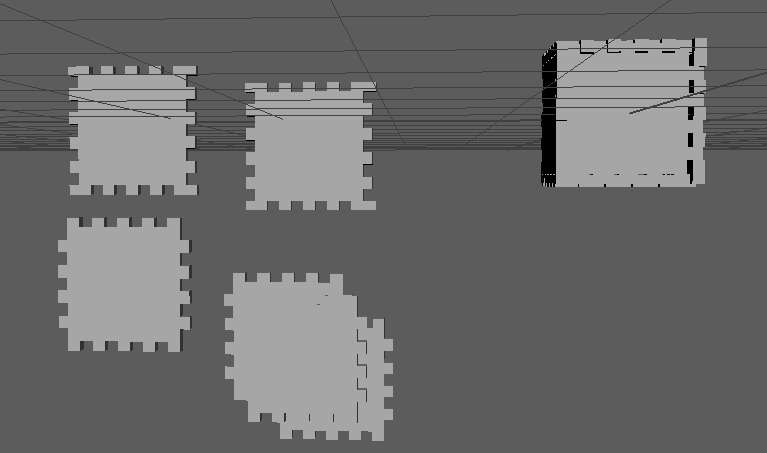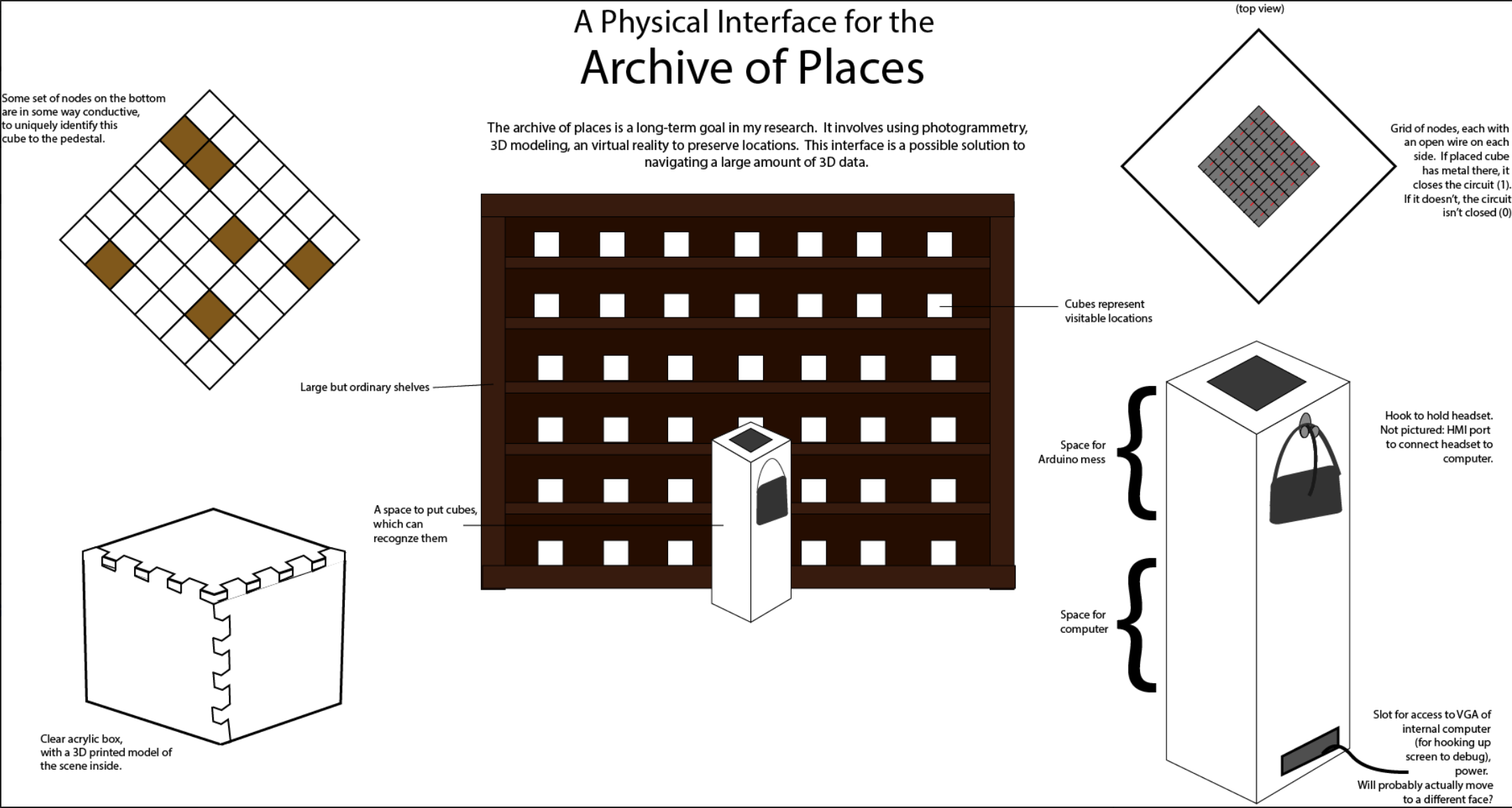
The Archive of Places is something I've wanted to create for a few years. My research focuses on virtual reality. I'm interested in the capacity of 3D data and especially virtual reality as an archival tool. I’ve been thinking about the way that disadvantaged communities, and in particular queer and trans communities tend to not be in control of the spaces where their communities are centered, that those spaces can be taken away with very little warning, and the amount of history that is lost every time that happens. We've seen this locally in the sudden sale Paradise, a decades-old gay bar, to Novartis, the renovations and restructuring of Senior House, and gentrification in surrounding communities. I've also been thinking about this in the context of climate change. Large portions of Boston are likely going to cease to exist during my lifetime. Historic, important places are going to end up underwater. What is the best way to keep some kind of record of them once they're gone?
I more or less already know how to make the software side of this. I've made photogrammetry models of architecture before, and I know how to put those models in a virtual reality application. However, creating an interface for those 3D spaces is a little more complex. I want to make something which makes it easy to conceptualize how many things are in the archive, and get a good sense of what a space will be like before entering it in VR. I worked out most of the details of what I want for this several months ago, but don't have many of the skills that will be involved in actually making it yet.
I'm very new to CAD, so I started this week with tools that are familiar to me: simple, pen and paper sketches to get the idea out of my brain and into a format I can share.
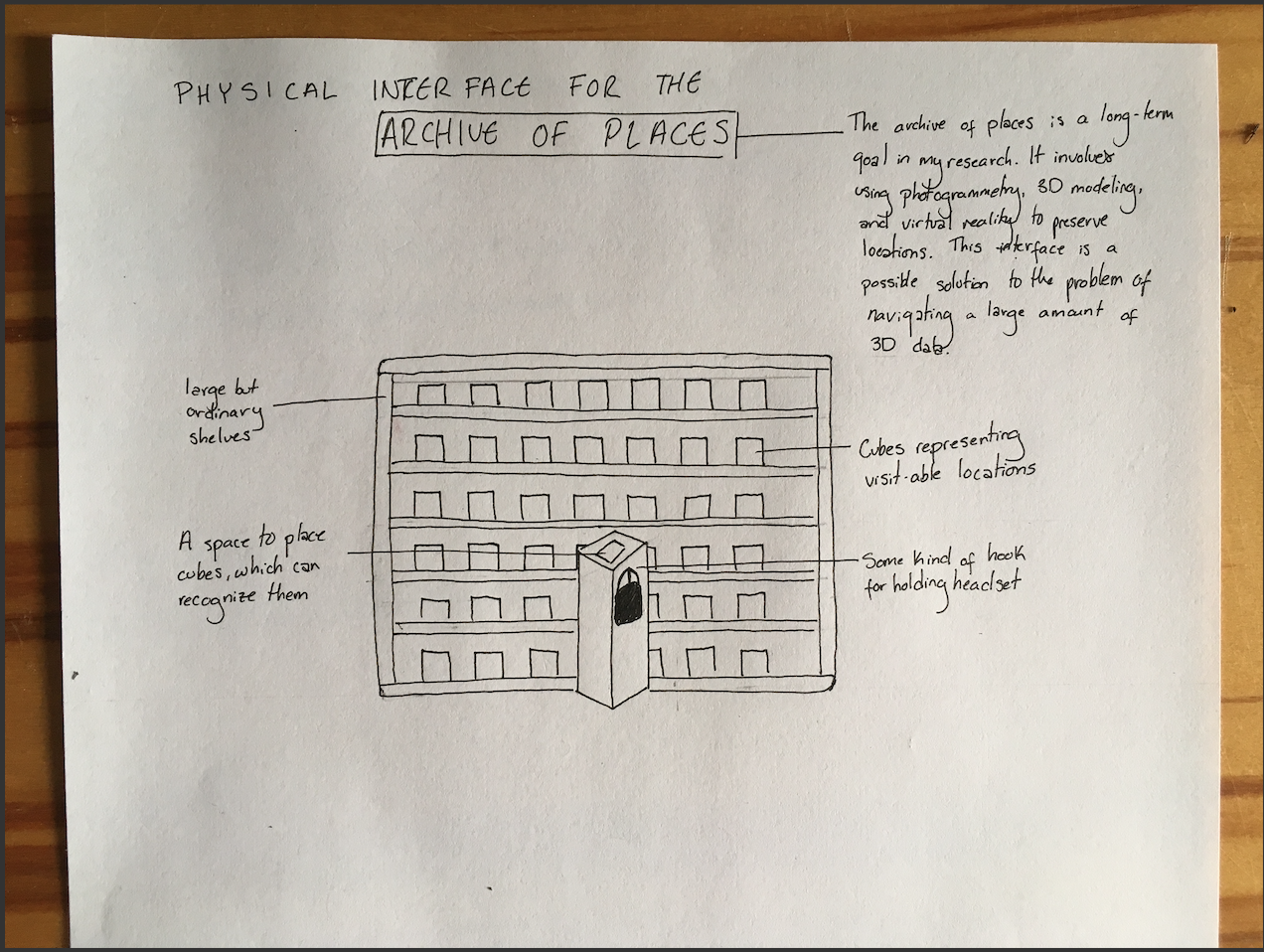
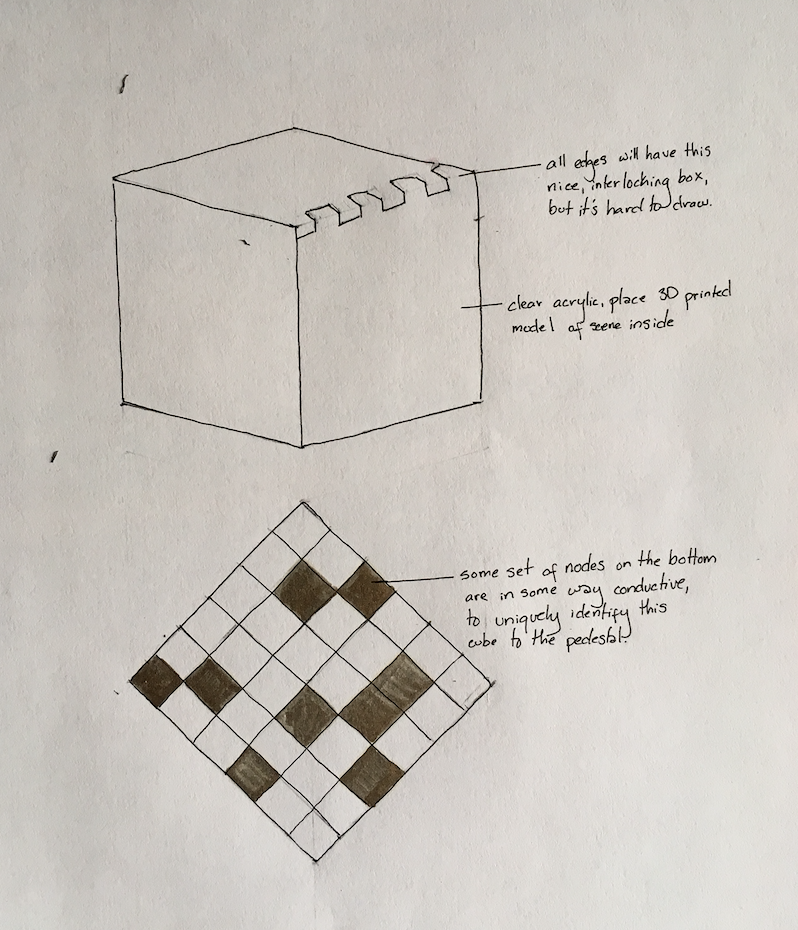
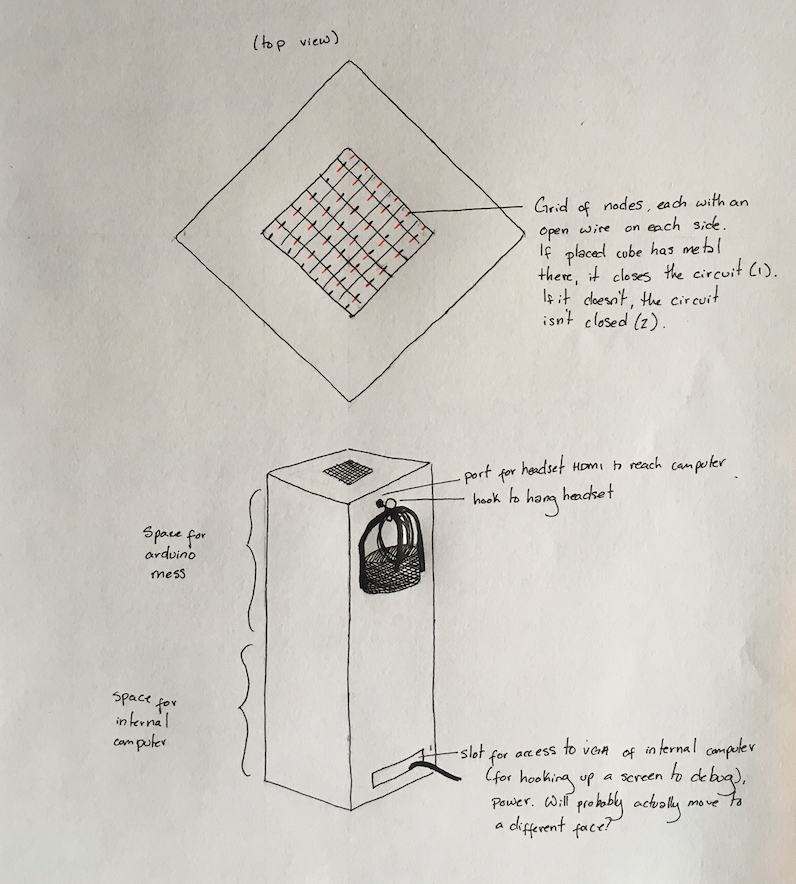
I then traced over these images in Adobe Illustrator, to combine them into something more legible.
I then tried to make the fingerlaced boxes in FreeCAD, but didn't get very far.

I therefore tried to just get a sense of what shapes I would need to make them by playing with boxes in Maya, a program which I'm much more familiar with.
This let me figure out that a possible design for laser-cut acrylic boxes can be done with two different patters. Two of the first kind and four of the other with fit together to make exactly the box that I was looking for.
